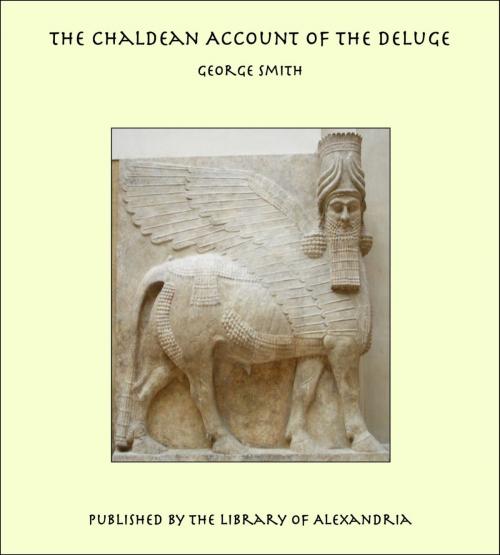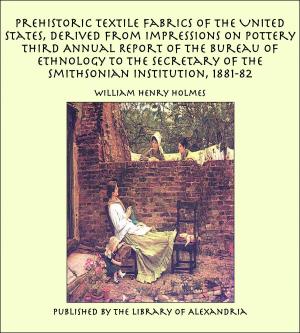The Chaldean Account of the Deluge
Nonfiction, Religion & Spirituality, New Age, History, Fiction & Literature| Author: | George Smith | ISBN: | 9781465545633 |
| Publisher: | Library of Alexandria | Publication: | March 8, 2015 |
| Imprint: | Language: | English |
| Author: | George Smith |
| ISBN: | 9781465545633 |
| Publisher: | Library of Alexandria |
| Publication: | March 8, 2015 |
| Imprint: | |
| Language: | English |
A short time back I discovered among the Assyrian tablets in the British Museum, an account of the flood; which, under the advice of our President, I now bring before the Society. For convenience of working, I had divided the collection of Assyrian tablets in the British Museum into sections, according to the subject matter of the inscriptions. I have recently been examining the division comprising the Mythological and Mythical tablets, and from this section I obtained a number of tablets, giving a curious series of legends and including a copy of the story of the Flood. On discovering these documents, which were much mutilated, I searched over all the collections of fragments of inscriptions, consisting of several thousands of smaller pieces, and ultimately recovered 80 fragments of these legends; by the aid of which I was enabled to restore nearly all the text of the description of the Flood, and considerable portions of the Other legends. These tablets were originally at least twelve in number, forming one story or set of legends, the account of the Flood being on the eleventh tablet. Of the inscription describing the Flood, there are fragments of three copies containing the same texts; these copies belong to the time of Assurbanipal, or about 660 years before the Christian era, and they were found in the library of that monarch in the palace at Nineveh. The original text, according to the statements on the tablets, must have belonged to the city of Erech, and it appears to have been either written in, or translated into the Semitic Babylonian, at a very early period. The date when this document was first written or translated is at present very difficult to decide, but the following are some of the evidences of its antiquity: 1st. The three Assyrian copies present a number of variant readings, which had crept into the text since the original documents were written.
A short time back I discovered among the Assyrian tablets in the British Museum, an account of the flood; which, under the advice of our President, I now bring before the Society. For convenience of working, I had divided the collection of Assyrian tablets in the British Museum into sections, according to the subject matter of the inscriptions. I have recently been examining the division comprising the Mythological and Mythical tablets, and from this section I obtained a number of tablets, giving a curious series of legends and including a copy of the story of the Flood. On discovering these documents, which were much mutilated, I searched over all the collections of fragments of inscriptions, consisting of several thousands of smaller pieces, and ultimately recovered 80 fragments of these legends; by the aid of which I was enabled to restore nearly all the text of the description of the Flood, and considerable portions of the Other legends. These tablets were originally at least twelve in number, forming one story or set of legends, the account of the Flood being on the eleventh tablet. Of the inscription describing the Flood, there are fragments of three copies containing the same texts; these copies belong to the time of Assurbanipal, or about 660 years before the Christian era, and they were found in the library of that monarch in the palace at Nineveh. The original text, according to the statements on the tablets, must have belonged to the city of Erech, and it appears to have been either written in, or translated into the Semitic Babylonian, at a very early period. The date when this document was first written or translated is at present very difficult to decide, but the following are some of the evidences of its antiquity: 1st. The three Assyrian copies present a number of variant readings, which had crept into the text since the original documents were written.















